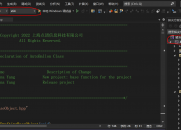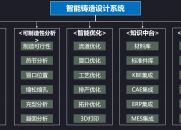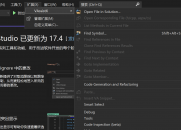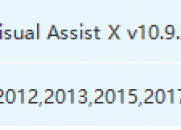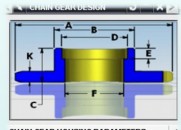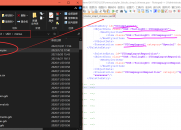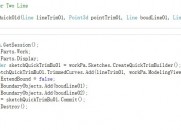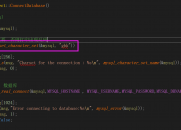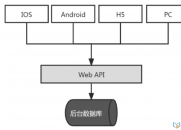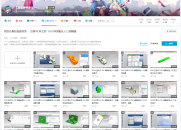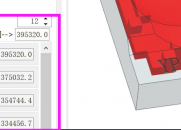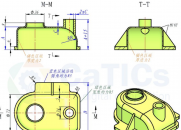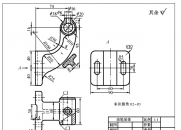|
|
 小新
发表于 2014-5-8 15:55:39
|阅读模式
小新
发表于 2014-5-8 15:55:39
|阅读模式
请使用QQ关联注册PLM之家,学习更多关于内容,更多精彩原创视频供你学习!
您需要 登录 才可以下载或查看,没有账号?注册

x
本帖最后由 小新 于 2014-5-8 16:10 编辑 1 B# @6 |3 t$ F+ ]
& \% w0 X: O- s9 ]( o
录制装配过程的JA,经过对录制的代码进行简化删减后,如下,经编译后能够实现自动化装配。- Session *theSession = Session::GetSession();
2 |3 S" F/ A; Z: n, K' o# n - Part *workPart(theSession->Parts()->Work());( c, Y$ h" }1 @) B" G
- Part *displayPart(theSession->Parts()->Display());
7 @' [. Z- W, n1 L# Q# A3 E% c - / S% ]& e) L. B$ e- o
- BasePart *basePart1;
( t8 E' Q1 x3 p- Q: Y; T( I% ~" N* _ - PartLoadStatus *partLoadStatus1;
0 U' o; }( l1 ]! }, `2 B - basePart1 = theSession->Parts()->OpenBase("D:\\sy\\model4.prt", &partLoadStatus1);
! g& L; h- c- Q5 A4 @- q: q' I - delete partLoadStatus1;5 x! P4 _' D+ J& O1 U* @4 S
-
: a; W- ~! C7 K J - Point3d basePoint1(0.0, 0.0, 0.0);
) o* b* m% G. x; _8 i& n - Matrix3x3 orientation1;
2 H. O+ W6 S# j! k% R/ U - orientation1.Xx = 1.0; orientation1.Xy = 0.0; orientation1.Xz = 0.0;
& f7 U6 [0 P* C9 i' {8 I' v6 g+ @ - orientation1.Yx = 0.0; orientation1.Yy = 1.0; orientation1.Yz = 0.0;* j4 \# x' X& A
- orientation1.Zx = 0.0; orientation1.Zy = 0.0; orientation1.Zz = 1.0;# H; J6 r' X T: r
- PartLoadStatus *partLoadStatus2;- X2 u; E. m. n, |% Y1 u6 Q
- Assemblies::Component *component1;6 s- U( T! B7 R; x0 I D
- component1 = workPart->ComponentAssembly()->AddComponent("D:\\sy\\model4.prt", "MODEL", "MODEL4", basePoint1, orientation1, -1, &partLoadStatus2, true);//添加组件% f, j7 b3 c& z. Z: Q
- delete partLoadStatus2; ! D3 a- i; n# {- t* y) K0 y, m$ n+ G
- & a! {$ p' A& B, Y B. |" ]. d2 p
- BasePart *basePart2;
1 P' j- o6 X+ L& Q - PartLoadStatus *partLoadStatus3;1 L6 {" g4 x6 |( Y
- basePart2 = theSession->Parts()->OpenBase("D:\\sy\\model5.prt", &partLoadStatus3); - O+ ~# i4 b! G7 N+ M+ ]
- delete partLoadStatus3;
N P. |0 _3 |( i' T - & Z: b: n* d2 @- Z, c# m+ Y
- Point3d basePoint2(0.0, 0.0, 0.0);
6 y; i2 n; e% X. p - Matrix3x3 orientation2;
3 A% |7 n. C7 z1 S: Q) r - orientation2.Xx = 1.0; orientation2.Xy = 0.0; orientation2.Xz = 0.0;/ A$ V, E! {% R: J: p
- orientation2.Yx = 0.0; orientation2.Yy = 1.0; orientation2.Yz = 0.0;$ U2 Y0 a4 G% p% D* N
- orientation2.Zx = 0.0; orientation2.Zy = 0.0; orientation2.Zz = 1.0;
+ P7 F: G: \" b3 x2 @' [; ] - PartLoadStatus *partLoadStatus4;3 R5 a$ D9 B6 k% H) M. [
- Assemblies::Component *component2;
' _5 ?! O: u2 \2 l$ n - component2 = workPart->ComponentAssembly()->AddComponent("D:\\sy\\model5.prt", "MODEL", "MODEL5", basePoint2, orientation2, -1, &partLoadStatus4, true);//添加组件! y0 T8 z$ `/ K& O, f$ z% d- Z$ a
- delete partLoadStatus4;
6 t, w' c$ B8 q5 ] u+ Z* v2 R - # z0 {( t4 T+ w
- Positioning::ComponentPositioner *componentPositioner1; c. q2 L6 Y' U' r3 h
- componentPositioner1 = workPart->ComponentAssembly()->Positioner();
% z, a( M6 \% R3 e* U - componentPositioner1->BeginAssemblyConstraints();
8 A: K- X1 g* D3 F. G2 z -
: B- Y$ I) U5 M! }8 A - Positioning::Network *network1;
2 L/ |( V- F8 l! N. T- h3 h7 Y - network1 = componentPositioner1->EstablishNetwork(); + D% }, L7 x7 R* D& M9 S
- Positioning::ComponentNetwork *componentNetwork1(dynamic_cast<Positioning::ComponentNetwork *>(network1));* b' I$ s U: N* P) @6 T; H: m
- componentNetwork1->SetMoveObjectsState(true);
, V4 O. j! {8 v - 8 t O) N) m# p2 p2 n2 W
- Positioning::Constraint *constraint1;6 c4 t) a5 o! M* A9 ~. H
- constraint1 = componentPositioner1->CreateConstraint(true);
) k& v; o3 H) c$ z* q% Z$ k -
5 l# L+ c& r6 H/ K7 c1 i - Positioning::ComponenTConstraint *componentConstraint1(dynamic_cast<Positioning::ComponentConstraint *>(constraint1));
0 X- T3 n" K' r0 h; ^# Y - componentConstraint1->SetConstraintAlignment(Positioning::Constraint::AlignmentContraAlign); $ C1 Q) {. i* t, a9 t
- componentConstraint1->SetConstraintType(Positioning::Constraint::TypeTouch);
( d& P4 \, S; j; B' S, m -
3 x; A, W+ y3 |2 X) h5 S: ~ - Face *face1(dynamic_cast<Face *>(component2->FindObject("PROTO#.Features|BLOCK(1)|FACE 6 {(500,25,25) BLOCK(1)}")));
4 ]$ Z$ }3 v6 h' V# F. \ - Positioning::ConstraintReference *constraintReference1;
- W0 w8 e8 m4 g5 P2 O, J) I- constraintReference1 = componentConstraint1->CreateConstraintReference(component2, face1, false, false, false);
0 Y) z- O4 p6 p, M- c3 I问题:2 x" m: }0 l" l% h
1)C++中是否有某个方法通过某个对象的tag返回其NXObject *类型
) ]1 e/ U! k7 W; A2)C++是否有某个类中的方法可以找到occurrence中的面(CreateConstraintReference需要的是occurrence的对象),而且返回的是NXObject *类型对象,可以直接用于CreateConstraintReference()方法。
# j n& }' A _ [8 B/ I) Z
; Y5 Q1 I0 {7 v |
|


